Do You Really Need a Bigger Boat?
When it comes to boats, what really makes one boat better than another is pretty subjective. There are several factors that go into choosing the right boat for your needs. Someone who fishes tournaments on the Great Lakes will need features and characteristics that are different from someone fishing small inland waters. So without too much technical terminology and boring text, here is what in my opinion as a tournament angler makes for the best walleye boats.
Hull Materials
Ultimately, the biggest decision you will have to make when choosing a boat is what the boat is actually built out of. There are really only two choices: fiberglass and aluminum. Each material has its merits, and each has its downfalls.
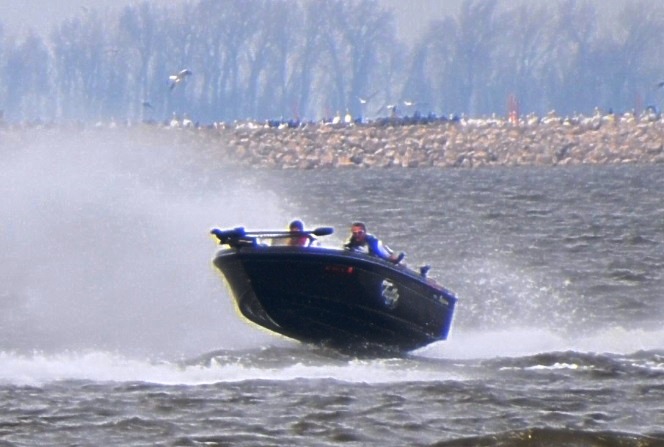
Fiberglass is moldable, allowing for fine-tuned hull designs that cannot be made with aluminum, providing and exceptional ride on smooth and rough water. Aluminum is inexpensive and easy to maintain, however it can be dented, welds can break, and rivets can pop out. In more modern aluminum boats, this is a less common occurrence, but if you plan to take your rig on big water, this is something to keep in mind. Fiberglass, although slightly heavier than aluminum, is incredibly durable and can take a real beating. Also, due to how glass hulls are constructed, they can generally accept higher horsepower outboards, and reach higher top end speeds.
The old saying goes, “wrap your a$$ in fiberglass,” and that is a saying that I stand by. Fishing a lot of big water, I can say from experience that the ride quality of a glass boat far surpasses that of aluminum. That being said, if you typically fish smaller waters where the waves don’t exceed 3 feet, aluminum is a good choice. Like I said before, this is completely dependent on what you prefer!
Hull Design
Once you have established what hull material suits your needs best, you need to find the hull design that best fits. Nearly all big water boats are designed with the deep-v hull, as it is high riding, dry, and great for blasting through big waves. There are a few variations of the deep-v hull, but most are essentially the same. In my opinion, no matter what water you fish the deep-v is going to give you the best performance as well as increase your rig’s storage capacity.
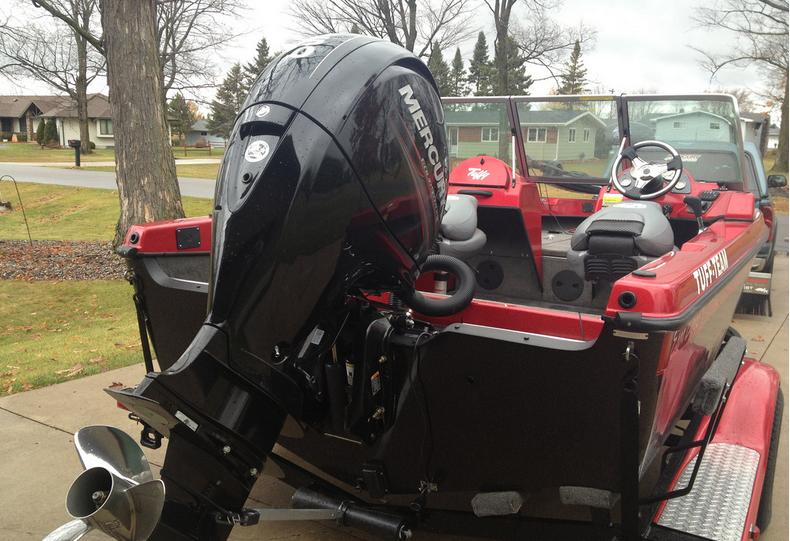
Features to look for in the hull design are a sharp v at the bow to cut waves, strakes (shown below) which force water down away from the hull creating a smooth ride on plane, and reverse chines (shown below), which throw the displaced water from the hull away from the boat resulting in a smooth, stable, and dry ride. Another feature that tends to be overlooked is the transom. For walleye boats, I prefer a deep transom to prevent waves from washing over the back of the boat, as well as providing plenty of room to mount a kicker motor for trolling. If you look closely at the first picture of the flying Tuffy, you can see the strakes and reverse chines on the hull!
Size
Next to hull material, this is the biggest question you need to answer. How big of a boat do you need for the fishing you enjoy. The biggest things you will be up against, especially on big water is the wind and waves. Being able to navigate and run through big waves is important, and having the right boat makes all the difference. When the waters you fish have waves under 3 feet, you can get away with running a boat under 17 feet long. When you start to exceed the 3 foot mark, you will want to consider running a longer boat.
Longer boats are better able to span waves meaning they can reach across from one wave to the next, providing a much smoother ride. With the right amount of power and speed, you can skip right over 3-4 foot waves in a larger boat and not feel a thing (especially in glass boats!). Smaller boats have a harder time spanning larger waves, and instead run into the waves making for a choppier ride. My way of classifying big water and small water boats is anything under 17 feet = small water. 17.5 feet and up = big water.
It is important to remember that not all boats are created equal. Last year I ran a 17.5 foot fiberglass hull that could run in 5-6 foot waves, could span most waves, and could hit the low 50mph range. Most boats of that size can’t pull that off, so going out and actually test driving boats is a great way to find these things out. In fact, I loved that hull design so much, I’m running it again this year!
Deck Space and Storage
As a tournament angler, I need about as much storage as I can get. On top of that, I still need a lot of front and rear deck space to move around and be able to fish multiple people at a time. In my opinion, the best walleye boat has a big front deck, and plenty of room in the back of the boat to move around. Most of my fishing is done in the warmer months of the year, and one of my favorite tactics is to troll. I can’t tell you how frustrating it is to try to work 6 lines and a kicker motor in the back of a boat where you are confined in a 5 foot square section with 2 other people. That just sucks. Make sure you have plenty of room for yourself, as well as at least one other person to work comfortably in the back of the boat.
If not having enough room is a big concern, consider checking out a tiller model. Yeah, they are kind of old school, but man do they have a ton of room! In fact, the boat I’m running in the 2015 season is a tiller model just for that reason. Since they don’t have consoles, you have the entire boat completely open providing a big, safe working environment.
Power
Now we are getting into the fun stuff! Power! There is nothing like putting the hammer down and unleashing a whole mess of angry ponies behind you. Here again with power, as in hull materials, you really only have two options: 2-stroke or 4-stroke. Both engine configurations provide excellent and reliable power, but each have a place and time when they truly excel. Generally, 2-strokes are lighter, torquier, and have a mean growl, but chug fuel like it’s going out of style. 4-strokes tend to have a little more lag and are heavier than their snappier 2-stroke cousins, but hardly use any fuel, don’t burn oil, and run extremely quiet.

Modern outboard engines are engineering miracles. Between fuel economy, reliability, performance, and durability, they are truly incredible machines. The best part is you can run regular 87 octane pump gas in nearly all newer outboards, making running these engines a whole lot more affordable!
When it comes to choosing the power for your rig, most dealers and manufacturers can steer you in the right direction based on what you want your boat to do. In the smaller water boats, you will most likely be looking for engines in the 75 to 115 horsepower range, and in the big water boats, somewhere between 150 to 300 horsepower. Obviously smaller boats need less power to get out of the hole and run on plane, but why would you need so much power on a boat that isn’t a whole lot bigger? Well, weight is a big factor.
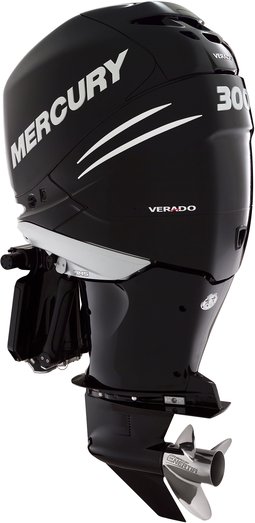
To get a 21 foot glass boat out of the hole, you need a LOT of torque, so having lots of power makes sense. The other reason is for quick acceleration. When running big water and big waves, you want an engine with lightening quick throttle response and acceleration to navigate waves and make quick bursts of speed through smooth water (especially true for tournament anglers, plus we just want to go fast!). My last tournament rig was a 17.5 foot Tuffy 1760 powered by a 150 Mercury Pro XS. With the hull only weighing 1400lbs, and the Mercury being a lighter 2-stroke, I could get away with less power and still get the acceleration and hole shot I needed. Again, this is all subjective as each boat and engine is different!
I could go on and write an entire book about what makes for the best walleye boat. There is just so much information to include in this that a single article such as this one just cannot contain it all. I hope that if you are in the market for a new walleye rig, these tips will at least be a starting point for helping you choose the perfect boat.

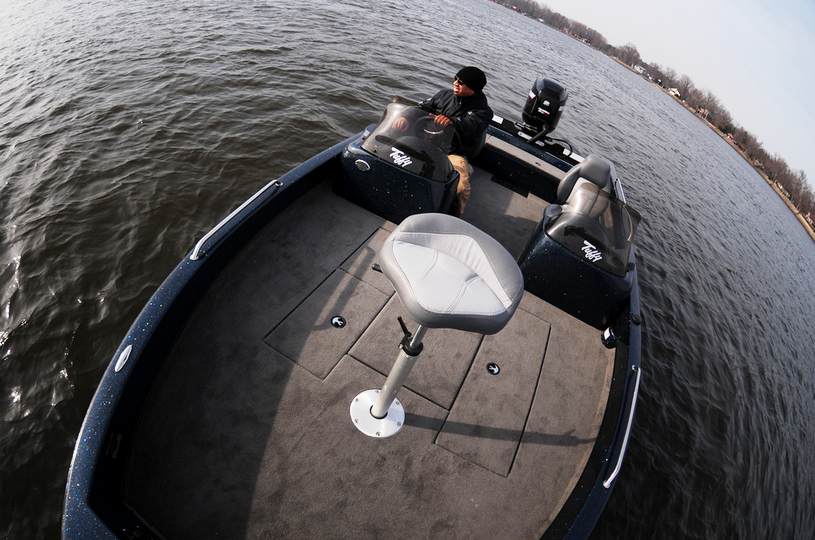
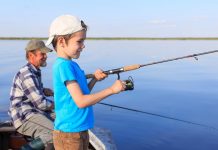
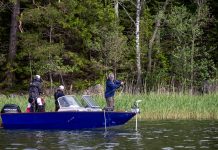
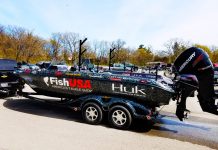
Nice article. Very helpful.
After reading this fine article I’m ready to run right out and buy a brand new boat.
Good Article. Can’t go wrong with an 18′ multispecies boat.
What are your thoughts on Lund glass vs Warrior ?
Mike,
I should start by saying that I have had very limited experiences in running both Lund and Warrior boats, therefore I don’t think I can make a well educated statement on either brand. One thing that I have noticed however is that most Warrior models come with trim tabs standard, which tells me that there are issues with the hulls getting up and out of the hole. That said, the best advice I could give you would be to get out and test drive both brands to see which hull you prefer!
I have been in love with Lund boats my whole life. I used a 18′ Mr. Pike deluxe for 30 years. The narrow beam was perfect to follow weed edges. Rivets gave way and I now use a 20′ Lund Adventure Fisherman. Sure miss the old boat.
Ranger 522D If you have 80K.